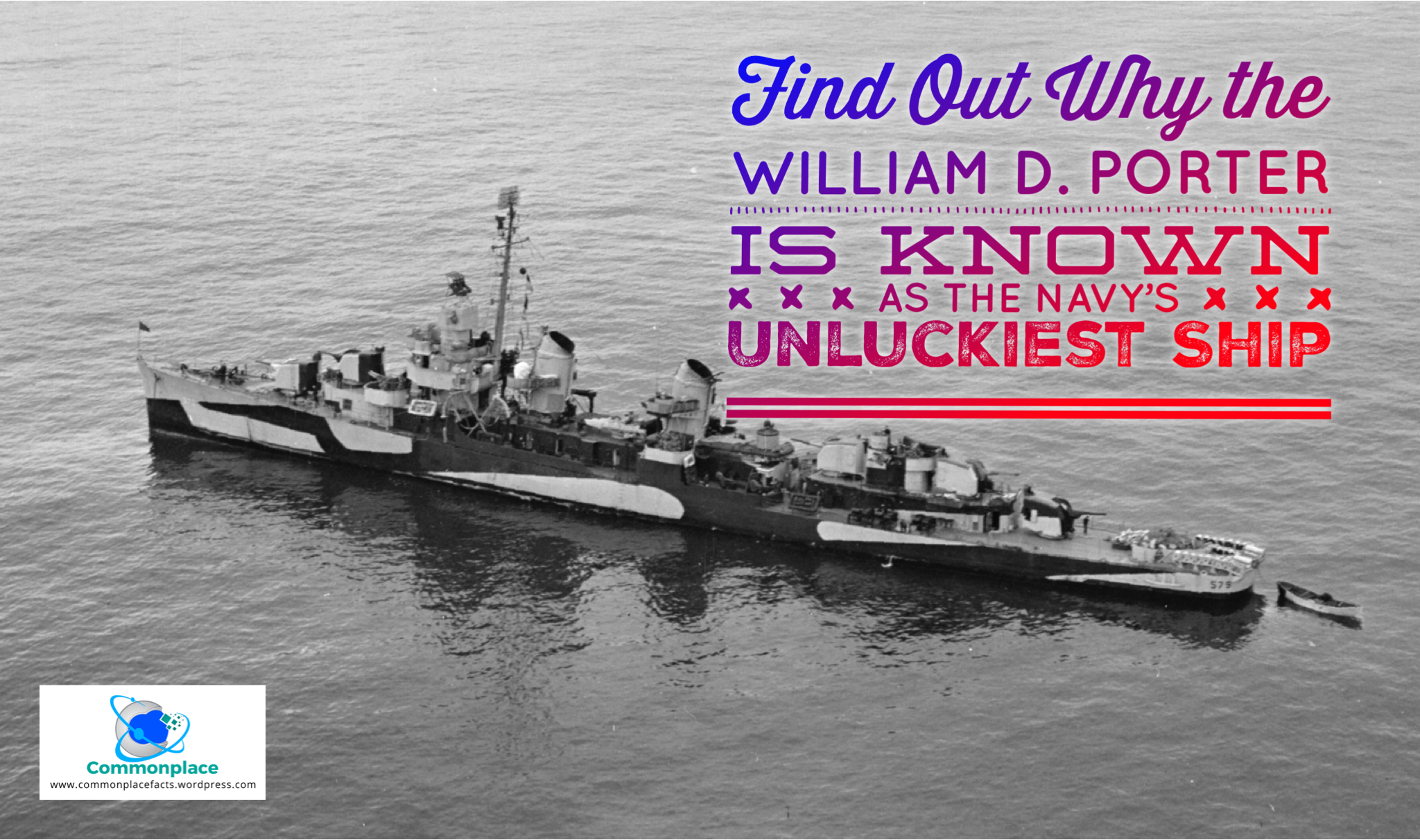
When a new ship is commissioned, those associated with the vessel always have high hopes that it will be remembered. For those connected with the USS William D. Porter, that goal was achieved. Unfortunately, the reason the ship is remembered is that it earned the dubious title of being the U.S. Navy’s unluckiest vessel.
William D. Porter (DD-579) was an assembly line destroyer. It was commissioned on July 6, 1943. Just four months later, the ship received orders to participate in an important secret mission. It was to accompany the battleship Iowa across the Atlantic to Morocco. On board Iowa was President Franklin D. Roosevelt and other high-level government officials, en route to a summit with Winston Churchill and other Allied war leaders.
The Porter‘s bad luck started almost at once. The night before she was to set sail, the William D. Porter collided with another ship. While the Porter suffered only minor scratches to its anchor, the other ship had to be taken out of service for repairs.
When the mission to transport the President began, the Iowa, Porter, and two other battleships of the four-ship convoy were under orders to maintain strict radio silence. They sailed through the U-boat-infested waters, hoping to avoid detection. When an underwater explosion erupted, the convoy went into immediate anti-submarine maneuvers. This continued for several tense minutes until the Porter signaled that the explosion was friendly fire. The ship had accidentally dropped a depth charge. To make matters worse, someone forgot to set the safety on the charge, so when it hit the water, it detonated.
Not long after that, the William D. Porter was struck by a massive wave. Anything — and anyone — unsecured on deck was swept into the sea. One of the crew members was lost and never recovered. One of the boilers in the engine room lost power. The mission, which was supposed to be in radio silence, transformed into one in which hourly updates had to be transmitted to Iowa.
The convoy was just east of Bermuda when President Roosevelt asked for a test of the ships’ air defenses. Iowa launched weather balloons as targets. While this was going on, the crew of the Porter worked to prepare a torpedo demonstration. The plan was to fire an unarmed torpedo toward Iowa. Unfortunately, one of the sailors forgot to remove the primer from one of the torpedo tubes. When the torpedo officer gave the command to fire an unarmed torpedo, a fully-armed one launched from the tubes, instead. Its target: the USS Iowa and the President of the United States.
Once the crew of the Porter realized what had happened, they tried to get the message across to Iowa that there was a live torpedo headed its way. First, they attempted to signal Iowa using light signals. Unfortunately, the signal operator got confused and pointed the signal lights in the wrong direction. Once that was corrected, the signal operator incorrectly told Iowa to go into full reverse. Finally, realizing the gravity of the situation required that they break radio silence, Porter radioed Iowa that it was in danger of being destroyed.
When Roosevelt heard that a torpedo was zooming toward him, he asked to be moved with his wheelchair over to the railing so that he could see it. Fearing an assassination plot, Iowa turned its guns toward the William D. Porter. Fortunately, the torpedo detonated when it struck heavy waves caused by Iowa’s increased speed.
The entire crew of the William D. Porter was placed under arrest and sent to Bermuda to face trial. It was the first time an entire U.S. naval crew had been arrested. Torpesdman Lawton Dawson confessed to having accidentally left the primer in the torpedo tube. He also admitted to trying to conceal the evidence by throwing the primer off the side of the ship. The inquiry proved that the situation was merely a string of unfortunate events and the information was not released to the public. Dawson was sentenced to 14 years of hard labor, and the rest of the crew’s careers were to be ended. President Roosevelt exercised his authority as Commander-in-Chief and ordered that no punishments be given to any member of the crew over the incident.
William D. Porter received a new assignment in the Aleutian Islands. The assignment was a simple patrol mission where it seemed even this unlucky ship wouldn’t be able to get into trouble. Before it could depart for this new assignment, however, the crew accidentally shot a five-inch artillery shell; it landed, of course, on the front yard of the base commandant’s residence.
When William D. Porter finally saw combat near Okinawa, Japan, it did manage to shoot down several Japanese aircraft. It also managed to take out three American planes in the process.
On June 10, 1945, just shy of its second birthday, the ship came under attack by a Japanese bomber. The plane attempted a kamikaze attack and missed the Porter. The plane sunk to the side of the ship and exploded underwater. The blast tore open the hull of the William D. Porter, bringing the ill-fated vessel to its doom.
In an uncharacteristic change of luck, all the members of the crew survived.
Read more fun facts about World War II.
Read more fun facts about Franklin D. Roosevelt.
Categories: History, Military and Warfare, Presidents, Transportation, US History

1 reply »